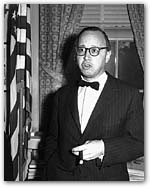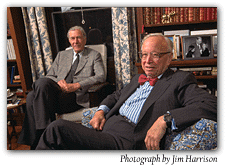Main Menu · Search ·Current Issue ·Contact ·Archives ·Centennial ·Letters to the Editor ·FAQs
![]()
 |
| Schlesinger announces his resignation as a White House special adviser, January 1964. |
 |
| Galbraith and friend at Logan Airport, March 1965, en route to an Indian art exhibit at the Fogg. |
 |
| Lions in winter: Galbraith welcomes Schlesinger back to Francis Avenue. |